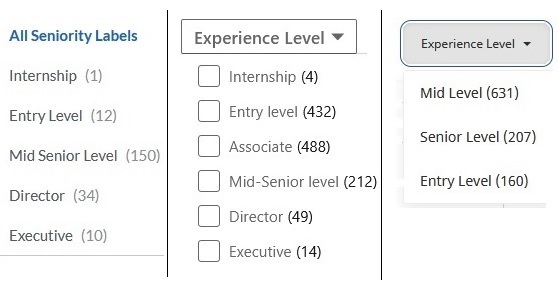The names of taxonomy terms need to be understood by the taxonomy’s users, and all users need to share the same understanding of what the term means. Typically, a taxonomy as two fundamental sets of users: those who tag content with the taxonomy terms and those who retrieve content with the taxonomy terms, the end-users. The taggers can usually be supported by definitions or scope notes for the terms. The end-users rarely have access to such explanatory notes for terms, and even if they did, it would be in some inconvenient collection of documentation that very few end-users would find and read. Therefore, the terms should represent concepts that should be obvious and intuitive the end-users and need no explanation. To this end, it is important to understand the users’ perspective and the terms that they would likely use to describe concepts. User research is thus an important part of taxonomy design.
Some taxonomies have two different end-users, and this is where it can get more complicated. Examples include health information whose end-users include both healthcare providers and patients or their family members; published educational content whose tagging producers are publishers, but the end-users include both students and instructors; marketplace websites who end-users include both sellers and buyers; and job search platforms whose end-users include both employers and job seekers. It is important in these cases that the different kinds of end-users have the same understanding of what a term means, but this sometimes not the case.
Example: The Problem with “Entry Level”
I recently noticed an example of a taxonomy term in the case of job search platforms (LinkedIn, Glassdoor, Indeed, etc.) that seemed to be understood differently by employers and job seekers. There are several controlled vocabularies that can be used in the “advanced” (or faceted) job search features. Job type (Full-time, Part-time, Contract, Temporary, etc.), Location, Company, Industry, and Experience Level. I took an interest in Experience Level (also called Seniority Level), because I wanted to help identify additional jobs for my daughter, who had just graduated from college. So, I selected the filter for “Entry level.” The other options include Internship, Entry Level, Associate (in LinkedIn), Mid Senior Level, Director, and Executive.

I was dismayed to see so may jobs classified as “Entry-level” requiring at least 2 years and sometimes as many as 5 years of experience. That is certainly not Entry-level by the definition of a recent college graduate.
Then one day (after my daughter found a job) I noticed a job posting for a taxonomist that on LinkedIn was classified as Entry level. It required at least 2 years of experience designing and managing taxonomies. It was clearly not an entry level for fresh college graduate. This time, however, I was looking at the job differently. I was familiar with the employer, and it was clear that for the employer this was an entry-level professional position in their firm. Even though prior experience was expected, this was the most junior professional position available. So, apparently the human resources representative of the company considered it entry level compared to other jobs they might hire for and classified it that way. It became obvious that employers and job-seekers do not use the same terms, such as “Entry level” to mean the same thing.
How to make the term Entry level clear, short of creating a definition or scope not that the users/end-users will never read, might be to replace it with two other terms, one for Recent grad and one for Junior Associate, but the exact wording may still have drawbacks and requires more research. Simplicity and elegance may have to be sacrificed for clarity. This is just one of the many trade-offs to deal with when creating taxonomies.
